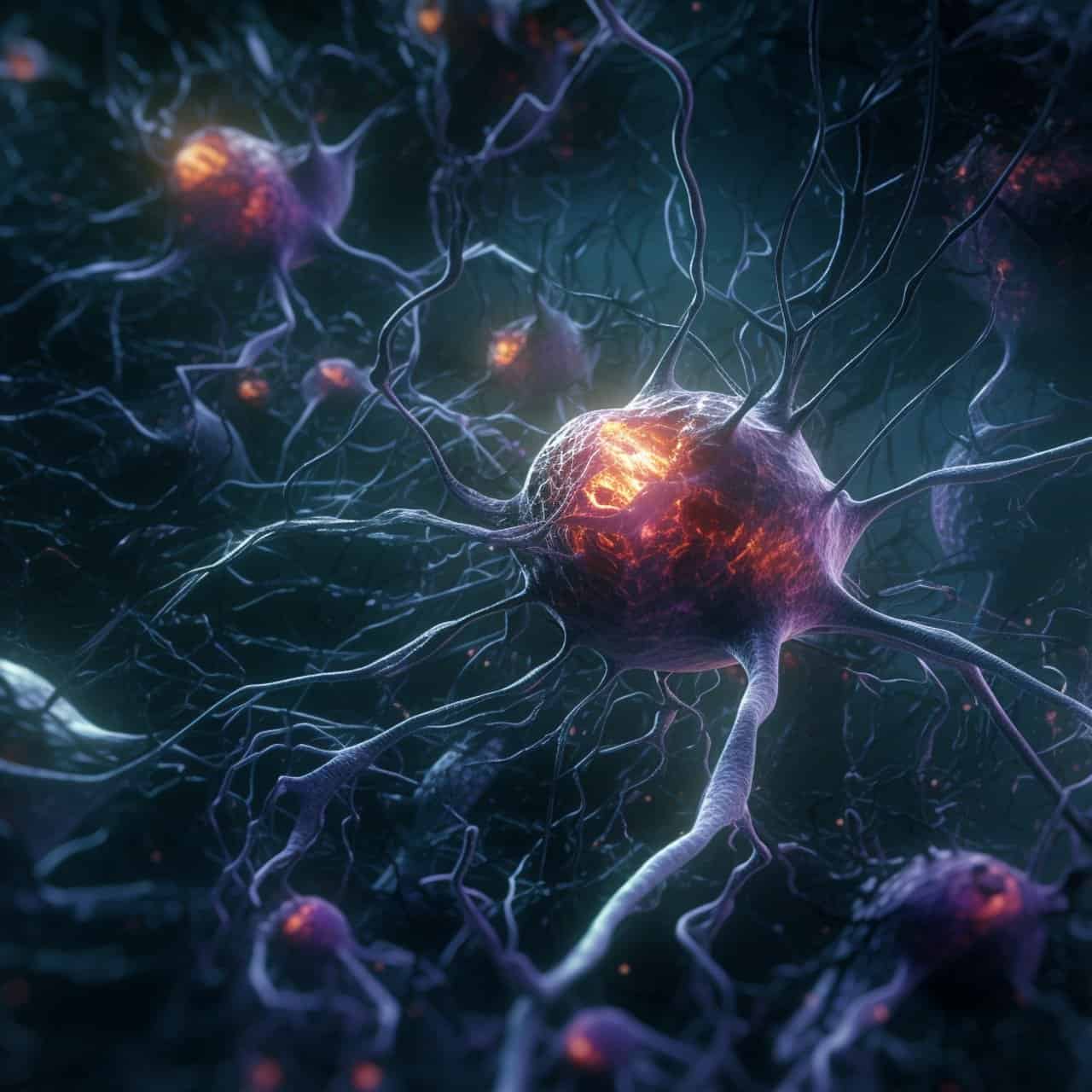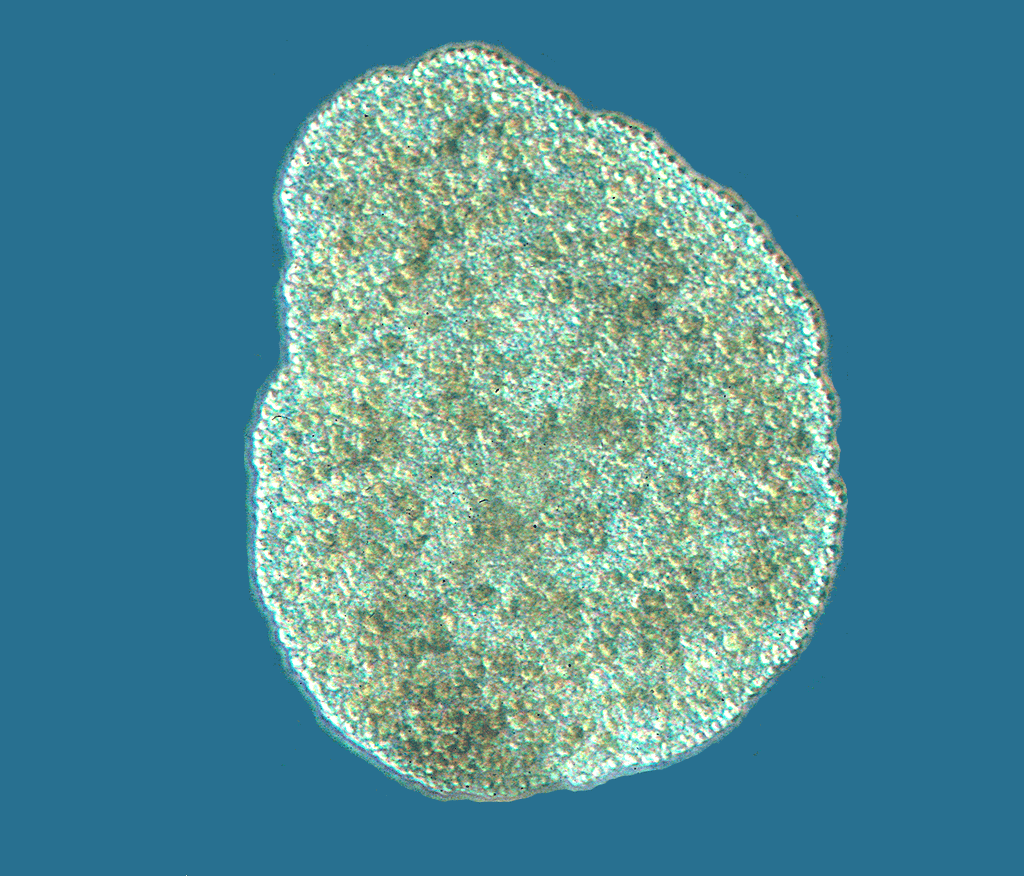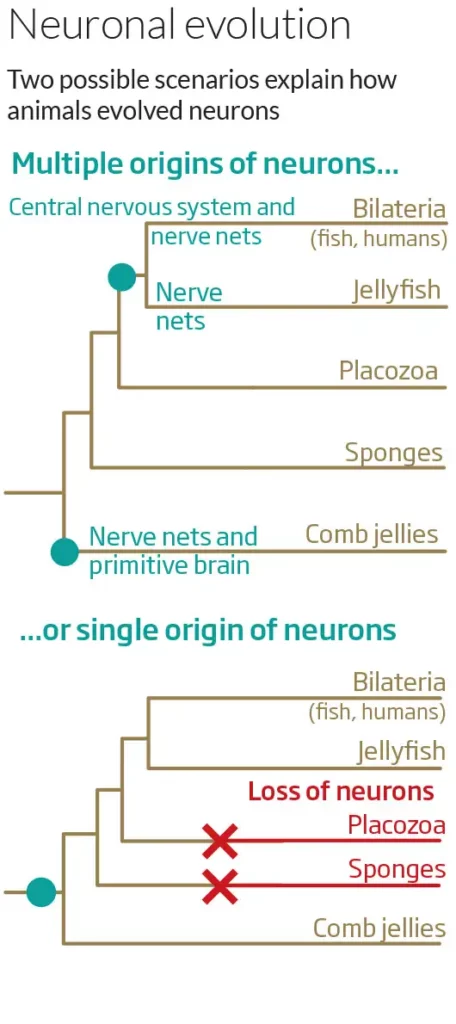
Dive deep into the oceans and you’ll encounter a mesmerizing world full of peculiar beings. Among them are the placozoans, minuscule marine animals that may possess clues to one of nature’s most profound puzzles: the birth of neurons.
The Mystical World of Placozoans
Placozoans are so tiny that they’re about the size of a chunky grain of sand. But don’t be easily fooled by their petite appearance for they tell a tale as old as time. Lacking organs or defined body parts, these blob-like beings belong to an ancient lineage that goes back to around 800 million years ago, placing them among the oldest of all animal lineages.
Placozoans glide over rocks, feasting on algae and microbes, leading lives in the warm shallows that many might consider rudimentary. In many ways, their way of life hasn’t changed for eons — and herein may lie many lessons that may teach us about our very humble beginnings.
The Neuronal Connection

The sea creatures coordinate their movement and behavior through peptidergic cells, special types of cells that release small peptides. Intrigued by the placozoans’ basic form of communication, scientists from the Centre for Genomic Regulation in Barcelona embarked on a journey to uncover the cell types that direct these animals in their day-to-day activities. Through these ‘cell atlases,’ the researchers could then map the genes that give each cell its unique role.
The researchers found that placozoans have nine main types of cells, which are connected by “in-between” cell types that can morph from one type to another depending on the needs of the organism, such as foraging and movement.
The story becomes more captivating when we consider that among the array of cell types, researchers found that peptidergic cells share many similarities with neurons — even though placozoans predate neurons by many millions of years. Envision these cells as a bridge connecting two islands. On one side are the basic placozoans, and on the other, are the intricate neural cells found in advanced animals.
The similarities between neurons and peptidergic cells are threefold:
- Development Process: Both peptidergic cells and neurons arise from progenitor epithelial cells. This differentiation, for peptidergic cells, is guided by signals similar to neurogenesis — the formation of new neurons seen in bilateria and the phylum Cnidaria.
- Message Sending Abilities: Peptidergic cells possess many of the genetic components needed to create the part of a neuron responsible for sending messages. But, they aren’t quite neurons yet. They miss key parts needed for receiving these messages and for transmitting electrical signals.
- Communication Mechanism: Just as in many cell types, peptidergic cells use a system where certain proteins, known as GPCRs (G-protein coupled receptors), pick up external signals. These signals initiate a cascade of internal reactions in the cell. Intriguingly, these external signals are managed by neuropeptides, the very same chemical messengers used by our neurons for a myriad of physiological processes.
“We were astounded by the parallels,” says Dr. Sebastián R. Najle, co-first author of the study and postdoctoral researcher at the Centre for Genomic Regulation. “The placozoan peptidergic cells have many similarities to primitive neuronal cells, even if they aren’t quite there yet. It’s like looking at an evolutionary stepping stone.”
Why is any of this important? Well, understanding the evolutionary link between these simple animals and more complex creatures might help shed light on our distant origins, including the root of consciousness.
This discovery puts forth an intriguing question. Did the ancient ancestors of today’s neurons start off as something akin to these placozoan secretory cells? These simple cells might have gradually acquired features, evolving into the neurons we’re familiar with, sparking the dawn of neural communication.
Piecing Together the Neural Puzzle
The first semblance of a modern neuron likely emerged around 650 million years ago in the common ancestor of cnidarians (a group of aquatic animals that include jellyfish, corals, and sea anemones) and bilaterians (animals characterized by bilateral symmetry, encompassing the vast majority of animal phyla, including humans, insects, and worms). Central nervous systems arose later, allowing for greater coordination and more complex behaviors.
However, many mysteries persist. Like a puzzle with missing pieces, the evolutionary journey of neurons remains incomplete.
“Why do placozoans, which lack neurons, share striking molecular traits with our neural cells? How did these cells evolve? Did it happen just once or multiple times?” wonders Dr. Xavier Grau-Bové, one of the study’s lead authors.
Until recently, the consensus had been that neurons evolved once in a single ancestor. More recently, researchers have found evidence of multiple origins of neurons.

The recent genome sequencing of comb jellies, small marine creatures that resemble but are only distantly related to jellyfish, has reshaped our understanding of evolutionary history. These creatures use a neural network under their skin and a cluster of brain-like neurons for various functions, including capturing food. The 2013 genome data implied that comb jellies diverged from the evolutionary tree before jellyfish and even before the neuron-lacking sponges. This means either sponges lost their neurons over time or neurons evolved independently twice.
With more genomes being sequenced from a wide variety of species, the veil over the evolutionary tales of neurons and other cells might soon be lifted.
“Cells are the fundamental units of life, so understanding how they come into being or change over time is key to explaining the evolutionary story of life. Placozoans, ctenophores, sponges, and other non-traditional model animals harbor secrets that we are only just beginning to unlock,” concludes ICREA Research Professor Arnau Sebé-Pedros.
The new findings appeared in the journal Cell.






